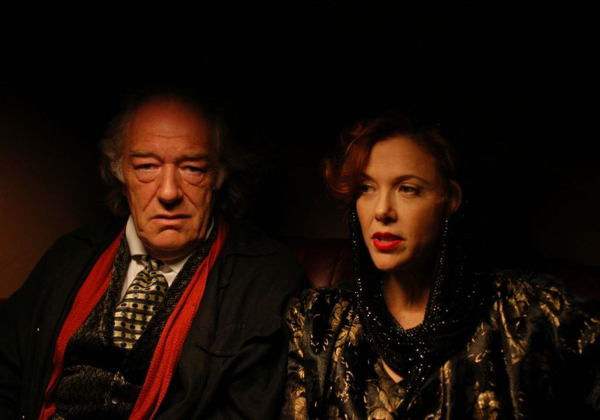Movie review by Greg Carlson
“Being Julia,” director Istvan Szabo’s film version of W. Somerset Maugham’s novel “Theatre,” makes the argument that everything is artifice and that people, with varying degrees of success, are always acting. Despite a splendid supporting cast and a delightful central turn by Annette Bening, “Being Julia” is as trifling and farcical as its subject matter: soapy backstage romances and turnabouts in late 1930s England. As Julia Lambert, a stage diva with Margot Channing-esque skill, Bening has a ball playing a woman who spends so much time acting that the line between herself and her characters has been blurry for years. Facing down the reality that one cannot play young forever, Julia careens between joy and despair – often in the same scene.
Julia seems to have a firmer grasp on her impending decline than does her husband/manager/director (and one-time co-star) Michael Gosselyn (Jeremy Irons), who seems content to keep filling the seats with one production after another. Together, Michael and Julia share a nearly grown-up son Roger (Thomas Sturridge), who knows more than he sometimes lets on. Several other key figures weave in and out of the story. Of these, the strangest but most arresting is Jimmy Langton, the ghost of Julia’s mentor, played with verve and gusto by Michael Gambon. Appearing to Julia at key moments to coach her through sticky interactions, Langton seems to materialize from a better-written, more interesting script.
Julia throws herself into a sexual fling with Tom Fennel (Shaun Evans, a bit out of his depth) a young American immediately recognizable as more calculating and deceptive than his moon-eyed persona suggests. As soon as Julia becomes aware of Tom’s manipulations, she brews up a sweet revenge that plays out – where else? – on the stage. Given the nature of Julia’s unconventional approach to relationships (humorously, she often repeats bits of dialogue in her everyday interactions) the viewer can never be entirely certain to what extent her emotions ring true, but Bening’s effervescence usually manages to smooth over the rough edges.
Ronald Harwood’s screenplay is the film’s largest liability, and its herky-jerky pacing inhibits any sense that events are building upon one another toward a particularly satisfying resolution. Bruce Greenwood, as Lord Charles, one of Julia’s admirers, disappears for so long that by the time he shows up for a pivotal moment, viewers might have altogether forgotten him. It is also impossible to believe that a West End veteran like Julia would fail to detect his sexual orientation, but that is another matter entirely.
“Being Julia” never manages to take flight in the manner of great backstage films like “All About Eve” or “The Dresser.” Perhaps its leisurely pace, in which some scenes are drawn out beyond the endurance of acceptable patience levels, is to blame. It could also be that several key characters – especially Julia’s husband Michael – remain out of focus when they should be razor sharp. Certainly Szabo should have been able to shore up the emotional void that exists at the heart of the movie. Bening and the rest of the cast enjoy themselves immensely, but the merriment is not always transferred to the adoring public.
